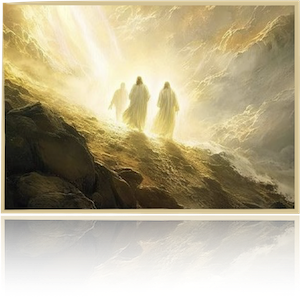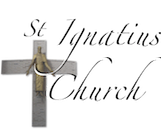
Homily of 2nd Sunday Of Lent
Before commenting on this passage as a whole, I want to make a few remarks about some details. The garments of Jesus became radiant. Mark uses a word which means the shine of polished steel. Perhaps if you have seen a sword in a museum, you can visualize what is meant here.

The appearance of a cloud is one of several such passages in Scripture. In the desert of the Holy Land a cloud is a symbol of hope and life because of the promise of rain. It always means the presence of God. Here, more specifically, it means that the Messiah has come. Thus, it also means that Jesus has been confirmed in his resolution to go to Jerusalem and accept the cross. At the agony in the garden Jesus will have to re-confirm his resolution. But at this point Jesus is confirmed in this decision and assured he has made the right choice by the presence of Moses (the supreme lawgiver) and that of Elijah (the first and greatest of the prophets). Moses and Elijah become witnesses of the glory of Christ, that is, they see that glory and then show the way to it. Both Moses and Elijah suffered because of their fidelity to God. So, too, Jesus will suffer because of his fidelity to the Father. The Father speaks to Jesus to assure him that he has chosen the right path. In Scripture the mountain is the place of communication with the divine. And so it is fitting that the Transfiguration takes place on a mountain. Peter wants to prolong the experience they are having by setting up tents.
The transfiguration is one of the miracles of Jesus in the Gospels.[2][4][5] Thomas Aquinas considered the transfiguration "the greatest miracle", in that it complemented baptism and showed the perfection of life in Heaven.[6] .[7][8] In 2002, Pope John Paul IIintroduced the Luminous Mysteries in the rosary, which include the transfiguration.
In Christian teachings, the transfiguration is a pivotal moment, and the setting on the mountain is presented as the point where human nature meets God: the meeting place of the temporal and the eternal, with Jesus as the connecting point, acting as the bridge between heaven and earth.[9]
The transfiguration not only supports the identity of Jesus as the Son of God (as in his baptism), but the statement "listen to him", identifies him as the messenger and mouth-piece of God.[19] Moses (the supreme lawgiver) and Elijah (the first and greatest of the prophets) meet with Jesus and assure him he has chosen the right path. They become witnesses of the glory of Christ, one who sees and then showsThe significance of this identification is enhanced by the presence of Elijah and Moses, for it indicates to the apostles that Jesus is the voice of God "par excellence", and instead of Moses or Elijah, representing the Law and the prophets, he should be listened to, surpassing their laws.
By Fr. Jerry Cusumano, Sj
 ENGLISH
ENGLISH  ESPAÑOL
ESPAÑOL 







